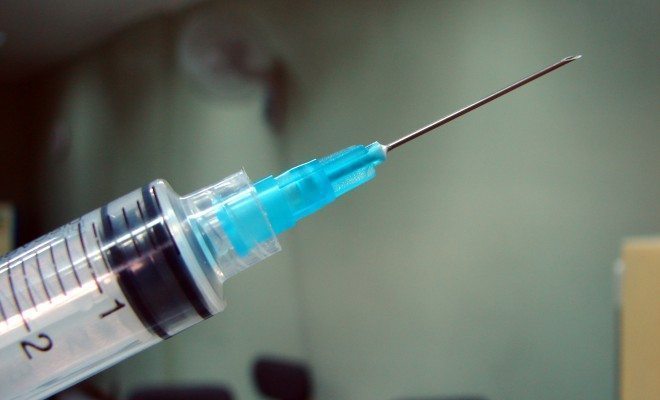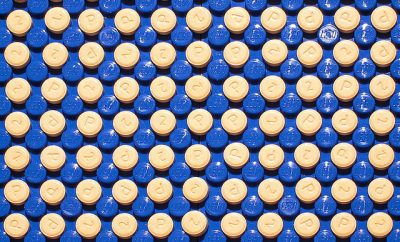 Image courtesy of [ZaldyImg via Flickr]
Image courtesy of [ZaldyImg via Flickr]
Health & Science
Perverse Incentives: Are Needle Exchanges Good Policy?
To most people, it is a matter of common sense and good policy that governments should not subsidize illegal or immoral activities on the part of their citizens. The belief that governments should not only consider the practical effects of their policy decisions but also the moral implications of those policy choices can be found across the political landscape, often on both sides of a debate. It can also lead to policies that might otherwise have been enacted because of their practical value being dismissed.
One area in which the belief in the importance of government policies not promoting immoral behavior manifests itself is the issue of Needle Exchange Programs (NEPs). These programs, in place in many American cities and around the world, allow intravenous drug users to bring in used syringes and exchange them for clean needles. It keeps users from sharing needles with each other which prevents the spread of HIV, Hepatitis C, and other infectious diseases. It also gives users the tools necessary to get high. Despite the alarming increase in these illnesses, many are unwilling to use federal money to enable drug use and this reluctance has very real consequences. So where do the facts lie, and what effect does moral opposition have on an otherwise effective program?
Background
Every year, 50,000 Americans become infected with HIV. Of these, approximately 11-14 percent are the direct result of intravenous drug use from needle sharing. Hepatitis infections also affect intravenous drug users. An estimated 50 to 80 percent of users will become infected with Hepatitis C within five years of starting intravenous drug use. Based on a study of seven pilot needle exchange programs, the cost savings from preventing an HIV infection was about $20,000–a fraction of the cost of treating an individual who contracts HIV. In light of the growing use of intravenous drugs and the need to prevent the transmission of disease, Congress recently took another look at the largely moral argument that kept the federal government from funding needle exchange programs and decided to lift the ban.
The argument against providing federal funding for NEPs is essentially an ideological and moral one and not necessarily one about the effectiveness of these endeavors. Those who would like to ban funding these exchanges argue that using intravenous drugs is immoral and that providing clean needles to drug users will encourage them to use more drugs. Or, at the very least, sends the message that it is acceptable to use. Therefore federal funds would be encouraging an immoral activity and the programs shouldn’t be funded.
A Perverse Incentive?
In legalese, a “perverse incentive” is a consequence or behavior that was unforeseen by the creators of a policy or law when they enacted it–usually, a negative one that thwarts the purpose the law was intended to serve. Let’s say you have a lot of rats in your city and you want to encourage your citizens to kill rats to get rid of them. One way to incentivize them to do so would be to pay a bounty for each rat tail. Instead of killing rats, you might find that everyone starts farming them to make money. Not exactly what you had in mind, but a perfectly reasonable response to getting paid for rat tails.
Opponents of funding NEPs think that providing clean needles to intravenous drug users will have a similar result. It will lead to the use of more clean needles but would also cause an increase in use overall. Just as the rat-tail bounty lead to additional dead rats, it increased the number of living ones as well.
Advocates of lifting the ban on the funding argue that the evidence shows that intravenous drug use does not increase when clean needles are provided for users. In fact, the evidence shows that users come for the needles but often end up availing themselves of other resources, such as access to rehabilitation and counseling. To those advocating that the ban remain lifted the fact that providing clean needles may be tacit consent (more legalese) for using drugs shouldn’t be relevant. What matters, and what should matter to policymakers, is that the programs work.
Morals and Numbers
The former ban on federal funding for Needle Exchange Programs has been in effect since 1988, with a brief respite in the 2010-11 budget. The rationale for this ban was largely due to some lawmakers’ unwillingness–on this issue, it was typically Republican lawmakers–to promote drug use. Although there was clearly a need to take steps to prevent the spread of HIV/AIDS and other blood-born illnesses, lawmakers were unwilling to provide the funding for clean needles. Essentially arguing that providing that funding amounted to facilitating drug use, and that these programs may even encourage addicts to use more because of increased access to clean needles.
Federal funds could still be used to pay for other efforts in the fight against the spread of HIV/AIDS and hepatitis, such as educating intravenous drug users about the importance of clean needles and providing counseling and rehabilitation services. But clean needles, or even giving out bleach to clean the needles, wasn’t allowed. Nor were NEPs allowed to use federal funds to pay for administrative support for these programs, limiting them entirely to state and local funds.
Although Congress lifted the ban, federal funds still cannot be used to directly purchase the needles themselves. The change simply allows for the use of federal money to pay for everything but the needles involved in these programs. For some advocates of NEPs, such as Daniel Raymond of the Harm Reduction Coalition, it is a compromise that they are happy to make. In his recent interview with NPR, Raymond outlines the rationale for his support for lifting the funding ban.
Those in opposition to federal funding make an argument that resonates with our cultural sense of personal responsibility and our unwillingness to help make bad behavior easier. If it really is the case that an addict who has access to clean needles will continue or even increase their drug use, opponents argue that the federal government should not be a party to it. The goal should be to combat drug use and its effects and lawmakers see direct funding for NEPs as counterintuitive–giving an addict a needle so that they can more safely use while telling them they shouldn’t be using in the first place. To those opposing funding, an increase in drug use isn’t even a perverse incentive but a very foreseeable consequence.
A Closer Look
Yet the numbers don’t support this conclusion. In fact, those users who go to a needle exchange program often also end up entering into a rehabilitation program. According to the ACLU, they are five times more likely than a user who never sought out an NEP to do so.
The reduction in rates of HIV infections can also be profound. In 2008, the ban on local funding for NEPs in Washington, D.C. was lifted. By 2010, the rate of new HIV infections decreased by 60 percent. There may be a perverse incentive at work here, but not the one you would think. Addicts want clean needles if they are going to use and that draws them to the NEP. But many of them also want to not need the clean needles in the first place. Once their foot is in the door, drug users are met with the social services that can help them rehabilitate. By making drug use safer, the programs are also, ultimately, making drug use less likely.
The Profit Motive
There is also a second perverse incentive that leads many to oppose funding for needle exchange programs. At most NEPs there is no limit to how many dirty needles you can turn in for clean ones. Therefore enterprising individuals can collect dirty needles and get clean ones, then turn around and sell those clean needles to users, essentially making a profit off of the federal government’s support for clean needles. For those morally opposed to providing the clean needles in the first place, this is an added reason to reinstitute the ban. Now, instead of just giving the needles away, the federal government is creating a business for clean needle sales.
To opponents of the program, this second perverse incentive may be even worse than the first. There is a visceral discomfort with the idea that drug dealers might be benefitting financially from a federally funded program.
But this profit motive may, in fact, be a benefit for drug users (and taxpayers) as well as increase the effectiveness of the NEPs in general. Essentially, you’re taking the exchange program and making it mobile. Instead of needing to plan a trip to the NEP to get the tools necessary to use, an addict can go to an individual supplier, who may be more local. Or a drug dealer, who users will inevitably encounter, now has an ancillary business of providing clean needles.
The proximity of a clean needle to an addict when they need to use is probably the deciding factor in whether they use a clean needle or a dirty one. This makes the clean needle option much easier to choose and it gives the needle supplier/drug dealer an incentive to promote clean needles: they want to sell more needles. One could argue it also gives them an incentive to try to sell more drugs, which it certainly does. Yet, the incentive to sell as much as possible exists anyway. Dirty needles do not diminish that profit motive and they don’t decrease the demand. If an addict is willing to pay a small premium for a clean needle there is an economic incentive for dealers to have clean needles to sell. By tying an economic incentive to drug dealers, you end up promoting the use of clean needles.
Opponents would also point out that if users get needles from drug dealers and not from the NEPs that actually reduces the main ancillary benefit of the program–that addicts get the other social services in addition to the clean needles when they show up. But advocates for these programs would argue that the solution to this problem might be to take the economic incentive model and tie it to those social services as well. Essentially mimicking the drug dealers actions by making NEPs more mobile. In fact, many NEPs are in buses and vans, perhaps for this reason.
For many, this argument does not remove the opposition to letting drug dealers or addicts profit financially from these programs. Nor does the effectiveness of these programs make up for the essential problem addicts are being supplied with the tools they need to use, which is the very thing the government wants to prevent. Even if the program is effective that doesn’t make it morally right from everyone’s perspective; the ends-justifies-the-means argument does not always hold water.
Conclusion
There is an epidemic of intravenous drug use in the United States, and around the world, in addition to a concurrent epidemic of HIV/AIDS, hepatitis, and other illnesses that are transmitted through the use of dirty needles. You would be hard-pressed to find a community or a family in America today that has not been personally impacted by a friend or a loved one who is struggling with addiction.
Opponents of federally funding NEPs would argue that the federal government should not make it easier for addicts to use. Instead of devoting our resources to giving drug users clean needles, which gives them the ability to more safely use and even profit off federal funding, the government should be devoting all of the resources it has to other methods of combating intravenous drug use. There are ways to promote rehabilitation programs and other forms of help that don’t involve also promoting “safe” drug use.
But advocates of lifting the ban argue that while other services for drug users are critically important NEPs should be supported even if initially they seem to encourage drug use, because in the long run they decrease the transmission of disease and intravenous drug use through the social services they offer. The fact that users may ultimately profit from the sale of clean needles is not a reason to defund these programs if they are still working. If the program is reducing the spread of disease and decreasing drug use, then it should be funded.
The division of opinion on this issue is centered more on the conflict between ideologies than on the effectiveness of NEPs. The programs have been proven to be successful in combating the spread of disease as intended and the evidence does not show an increase in drug use where these programs are available. Ultimately, the question is which should matter more: the moral message that providing needles sends, or the effectiveness of the program itself.
Resources
Primary
University of Texas at Austin, Needle Exchange Program
Additional
Financial Transparency, Farming For Rats: Perverse Incentives and Illicit Financial Flows
New York Times, Surge In Cases of HIV Tests U.S. Policy on Needle Exchanges
NPR, Congress Ends Ban On Federal Funding For Needle Exchange Programs
NPR, Needle Exchange Program Creates Black Market In Clean Syringes
ACLU, Needle Exchange Programs Promote Public Safety
TIME, Clean Needles Saved My Life
The Atlantic, The War On Drug Users : Are Syringe Exchanges Immoral?
University of California San Francisco, Does HIV Needle Exchange Work?








Comments